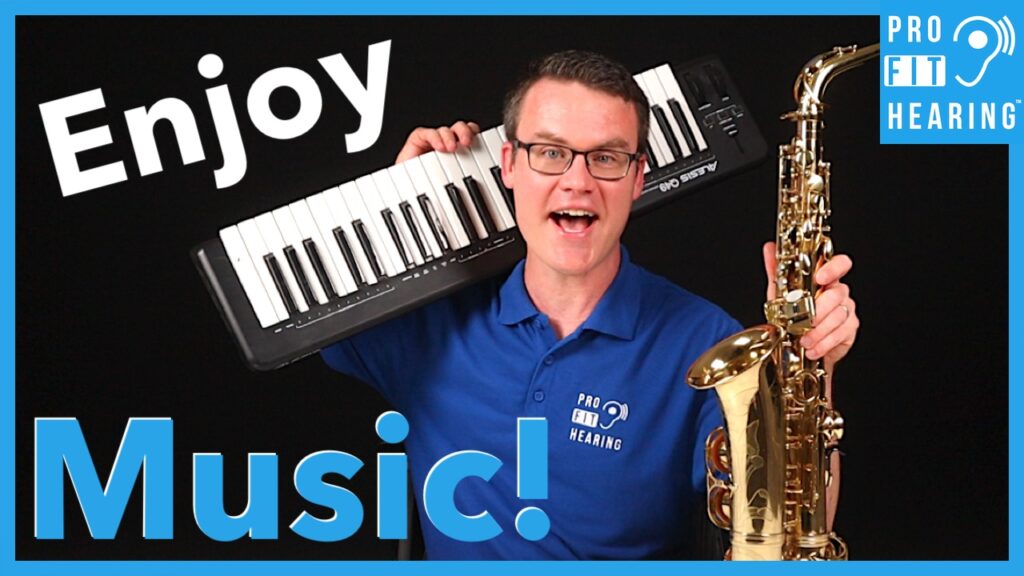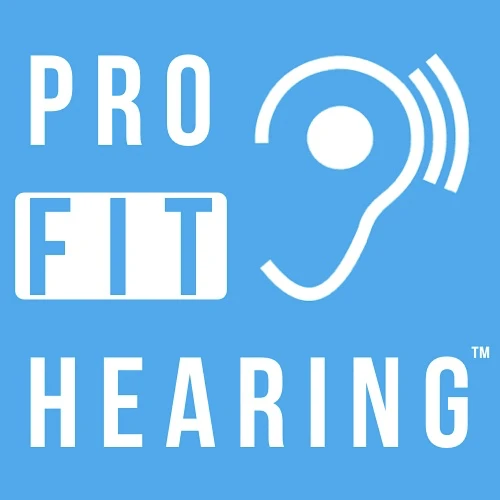Best Hearing Aid Settings for Musicians – 4 CRITICAL Adjustments for Music Sound Quality

Best Hearing Aid Settings for Musicians
Are you a musician that’s looking for the best music sound quality while wearing hearing aids? Well today, I’ll discuss 4 critical hearing aid adjustments plus a bonus tip for optimal music sound quality. Coming up!
SUBSCRIBE to our YouTube channel for weekly videos!
Hi, I’m Dr. Derek – audiologist, audio engineer, and musician with Pro Fit Hearing.com bringing you the best insight in today’s latest hearing aids, headphones, and audio technology to improve your life. If you have concerns about your hearing, always consult with your local physician or audiologist.
If you’re interested in hearing aids, check out my free eBook HERE.
Musicians rely on their hearing every day. Whether you’re writing, performing, or listening to music, the ability to hear accurately is critical for musicians. Minimizing exposure to loud sound with the use of hearing protection and a lower listening volume can help reduce your chances of experiencing hearing loss as well as tinnitus or ringing in the ears. Unfortunately, exposure to loud sound as a musician is common which can result in noise induced hearing loss and tinnitus.
Now, if you’re a musician that uses hearing aids or you’re thinking about getting hearing aids, it’s important to know that hearing aids are optimized to improve a person’s ability to hear and understand speech. The main goal of a hearing aid is to improve communication, so music sound quality can be overlooked. Some hearing aids have the option of a music program that integrates the concepts that I’ll talk about today. Your audiologist can give you access to these settings that you can use whenever you’re playing or listening to music. Now, here are 4 critical hearing aid adjustments plus a bonus tip to optimize your hearing aids for music.
Best Hearing Aid Settings for Musicians #1-4
#1 – Physical Fit
First, consider the physical fit of the hearing aid. If your voice is too loud or booming when you sing or speak while you’re wearing hearing aids, you may need an adjustment to minimize the occlusion effect. The occlusion effect results in an unnatural quality of your own voice when the ear canal is partially or complete occluded with a hearing aid. This effect can be minimized by switching to a smaller, less occluding ear piece or with an adjustment to the hearing aid’s frequency response.
#2 – Dynamics (A/D conversion)
Listen to music at a softer listening level. This will help reduce distortion of loud sounds by the hearing aid’s A/D (or analog to digital) converter. Hearing aids that use a higher bit rate like 20 or 24 bit allow for a greater dynamic (or volume) range so that louder music can be accurately captured by the hearing aid without distorting the sound quality. The music entering the hearing aid is then transformed to accommodate the user’s hearing thresholds while keeping the music at a comfortable listening level. Your audiologist can also reduce the hearing aid volume settings for loud sounds.
#3 – Frequency
Music sounds best with not only a wider dynamic range but also with a wide frequency response. This means that the hearing aid will reproduce a wide range of low to high pitched musical tones for better music sound quality. You can check the hearing aid’s frequency response in the manufacturer’s documentation. Some hearing aids may amplify up to 10 kHz.
Disable frequency transposition or frequency shifting. This setting is often used to optimize speech understanding for people with high frequency hearing loss. It works by moving high frequency sounds into a lower frequency range so that it’s easier for a hearing impaired person to understand speech, however this setting will distort music sound quality. You can also disable noise reduction. Noise reduction can impact the low frequencies or the bass response in music.
One last frequency setting you can disable is feedback management. Feedback is that high pitched whistling that a hearing aid sometimes produces. Feedback occurs when the hearing aid volume is loud enough that the amplified sound leaks out of the ear canal and is picked up by the hearing aid microphone. Feedback management is used to detect feedback and eliminate it automatically. Whenever you’re listening to music, feedback management might accidentally eliminate certain sounds that are more pure tone and high pitched in nature, like a flute or a stringed instrument.
#4 – Compression
Compression is used to turn down louder sounds that exceed a set volume level. This reduces a sound’s dynamic range, and it’s used to provide a hearing impaired person with more sounds that are audible. Less compression is recommended for more natural sounding music.
Best Hearing Aid Settings for Musicians – Bonus Tip
Ok, so let’s talk about the bonus tip for optimal music sound quality for hearing aid users – Use Audio Streaming.
Hearing aids today often connect directly to smartphones and have wireless accessories so that you can connect your hearing aids directly to a music playback device. This technology allows you to listen to music without using separate headphones or earbuds. Another benefit of using audio streaming with hearing aids is that the music sound quality is customized to your degree of hearing loss. This way you can have the best listening experience.
Remember that all the hearing aid adjustments discussed today are specifically for music and can be enabled by your audiologist within a special music program on the hearing aid. Settings for optimized speech understanding and communication will be different that those for music.
Comment below: what questions do you have about hearing aids and music? If you received value from this post, go to https://www.youtube.com/profithearing and check out all the videos on our YouTube channel.
-Dr. Derek
